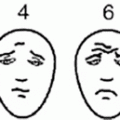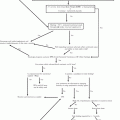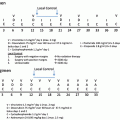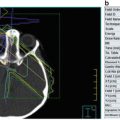Challenge
Ways to overcome challenge
Treatment abandonment
Provide guest housing for patients and parents
Provide food for patients and parents
Organize parent support groups
Assist with cost of transportation
Set up satellite clinics to facilitate access to treatment
Organize patient follow-up procedures
Provide aggressive patient and parent education
Provide aggressive community education
Encourage community involvement
Shortage of trained nurses
Provide continuing education and training for nurses
Provide salary supplements for key trained nurses
Encourage the local foundation to provide incentives to current nursing staff
Encourage active participation of nurses in multidisciplinary team activities
Suboptimal infection control
Provide continuing education and training on infection-control practices
Encourage the establishment of infection-control policies and procedures
Provide salary supplements for infection-control professionals
Encourage local foundation to provide continual supply of hand hygiene products and facilities when not available
Insufficient funds
Help local foundation strengthen local fundraising capabilities
Encourage local foundation and medical team to obtain for additional government funding
Encourage applications to international funding agencies
Cost and availability of medication
Encourage local foundation to seek bulk purchases either with regional foundations or through WHO’s Pan American Health Organization (PAHO)
Use services provided by the Global Outreach Program of the National Children’s Cancer Society
Late diagnosis
Develop local community education campaigns
Develop educational materials for community health workers and general pediatricians
Incorrect diagnosis
Provide local professionals access to consult from experts in sponsor hospital
Cover costs for immunophenotyping
The key factors which appear to impact more profoundly on the outcomes do not coincide with clinical but with logistical, cultural, socioeconomic variables like the geographical distance from treatment centers, which end up conditioning survival and compliance profile and suggesting need of more targeted caring and supportive strategies [26, 27].
The investment of a twinning program for pediatric oncology into the more directly clinical aspects (e.g., by assuring free access to drugs and monitoring inhospital complications) must therefore be matched by an equally intensive activation and support of peripheral monitoring, with a participation of the personnel of the health care system. It is clear that an effective continuity of integrated supportive networks can hardly be guaranteed by a sum of interventions organized and financed by external collaborations. The important clinical and human results obtained by a twinning program must be integrated into a fully shared national responsibility.
It is vital to establish a long-term commitment to a comprehensive and holistic strategy that incorporates supply of drugs, training and supervision of health professionals, and the care of the children and their parents. A long-term program should be based on a bilateral agreement, with periodic reassessments and adjustments of strategies and needs. Management responsibilities should be given to local professionals, with respect for local culture and traditions, to increase self-confidence and progressive autonomy; this may be crucial to avoid the risk for a project to be considered a sort of new colonialism.
A program for childhood cancer should trigger also the development of similar programs in other medical fields and should promote a closer relationship between specialized centers and peripheral hospitals. A local training of medical, nursing, and technical staff can encourage specialists to develop subspecialty practices in their national communities. It can also stimulate awareness about health care needs, highlighting poor governance and poor planning into health outcomes in LMIC, so that, instead of diverting resources from basic health care services, international partnerships to treat children with cancer may increase resources available to the local health care system. A “therapeutic alliance” should be established among local health professionals, parents, and volunteers in order to sensitize institutions and health authorities, mobilize resources, and effectively identify needs and priorities [28].
Protocols for diagnosis and therapy should be tailored to the local situation and extended progressively from cancers with more favorable results to the other common pediatric tumors [29]. Particular attention should be given to the problem of refusal or early abandonment of treatment, which may be a relevant cause of failure in childhood cancer treatment in LMIC [30–32]. These programs however can be hardly successful in countries with extreme poverty; additional resources are needed also to support very poor families to treat all children.
The challenges related to the beginning of a twinning program are summarized in Table 4.1.
Formal research projects should be promoted too. Priority should be given to topics of interest for LMIC centers, and the visibility of their contribution (e.g., in publications) must be assured. The role of telemedicine may be crucial as detailed below.
The components for establishing a twinning program include the following steps:
Initial assessment
Identification of local leaders (the local champion)
Establishment of an initial 5-year plan
Establishment of a formal memorandum of understanding
Establishment of a hospital cancer registry
Financial assistance
Targeted education and training
Follow-up visits
Continuous communication1
Telemedicine in Low-Income Countries
Telemedicine (which literally means “healing at distance”) is the use of medical information exchanged from one site to another via electronic communications to improve patients’ health. A closely related but broader term is “tele-health,” which is used to denote remote health care, which does not necessarily involve clinical services.2 Telemedicine can be used in many medical specialties and is classified according to its area of application: teleradiology (actually the most widespread), telecardiology, telepathology, teledermatology, teledentistry, teleaudiology, telepsychology, etc.
Despite the fact that research and developments in telemedicine have been carried on since the 1970s, it is only the recent evolution of the Internet that allows easy and affordable applications of telemedicine and—more generally—tele-health. Indeed, broadband Internet with the related software technologies and the new paradigms of cloud and mobile computing are important enablers of telemedicine applications.
In 2009, WHO carried out a global survey to obtain general information about the state of telemedicine in member states and, in particular, in developing countries. The report clearly expressed the potential large benefits of telemedicine in general and for low-income countries in particular: “it could be even more beneficial for underserved and developing countries where access to basic care is of primary concern. One of the biggest opportunities telemedicine presents is increased access to health care. Providing populations in these underserved countries with the means to access health care has the potential to help meet previously unmet needs and positively impact health services. Telemedicine applications have successfully improved the quality and accessibility of medical care by allowing distant providers to evaluate, diagnose, treat, and provide follow-up care to patients in less economically developed countries” [33].
Nevertheless, the WHO report describes a number of “barriers,” which can be of obstacle to the widespread adoption of telemedicine. While developed countries expressed concerns about legal issues surrounding patient privacy and confidentiality, competing health system priorities, and a perceived lack of demand, developing countries considered resource issues such as high costs, underdeveloped infrastructure, and lack of technical expertise as the main barriers. For these countries, substantial difficulties are still related to the availability and maintenance of the technical infrastructures necessary to implement telemedicine solutions and in particular instability of electric power supply, unavailability of Internet connectivity beyond large cities, unreliable connectivity, computer viruses, limited bandwidth, and limited local skills and resources.
We suggest a more optimistic view, based on the belief that—at least—the costs and difficulties connected with the technology infrastructures are often overemphasized. This view is supported by the following considerations:
1.
Internet connectivity (access availability, quality, and costs) is improving, or will improve in the near future, even in low-income countries. There are already many countries in which connectivity is widespread and reasonably priced. At end 2011, Internet user penetration stood at 24 % in developing countries and 15 % in LIC. This is still low compared to developed countries (70 %), but steadily growing [34].
2.
The incredibly rapid evolution of the software technologies connected with the Internet allows now—and will increasingly allow in the future—the implementation of software applications accessible from the Internet at a fraction of the costs necessary only a few years ago. As a matter of fact, the costs of developing and setting up these applications have been considerably lowered in recent years and will continue to decrease. In some Web applications, cost reductions obtained in the last decade are of an order of magnitude or even more. This is mainly a consequence of the developments of important open-source software platforms and the growing availability of ready-made software components and services that can be easily integrated and mixed up to create applications that, only a decade ago, would have required long and expensive development efforts.
3.
Cloud computing solutions—and in particular “software as a service” (SaaS) solutions, where a software application is hosted and managed by an online service provider—can reduce drastically the upfront investments necessary to implement a telemedicine application. In some cases there will be no capital expenses (“capex”) to set up the application, but only operation expenses (“opex”), consisting in the monthly fees paid to the service provider, on a “per use” pricing. This is particularly true for the software applications in the areas of communication, collaboration, and social networking, which can be most useful in the area of telemedicine.
4.
The penetration of mobile cellular subscriptions in the developing world has undergone an exceptional growth in the last few years, and reached 78 % at end of 2011, the level reached by the developed world only 6–7 years before [34]. This exceptional growth continues at 2-digit increase every year. There are now more than six billion mobile telephone subscriptions worldwide. Ultra-low-cost mobile telephones are becoming available and will be more and more in the next future. British carrier Vodafone has recently announced ultra-cheap mobile devices, starting at below $15, specifically addressed to low-income markets. These are still bare boned on the feature side (voice calls, SMS and mobile payments, and in the upper model FM radio), but a high growth in smartphones and (affordable) tablets is to be expected within the next couple of years. These will allow mobile access to the Internet and to all online applications from the “cloud” from low-cost mobile devices.
ICTs (Information and Communication Technologies) have substantially changed in the last decade, and will continue to evolve, at a pace that would have been unthinkable only a few years ago. This should be always considered when planning any cooperation project aimed at improving health in low-income countries. Some solutions, which are impractical or even technically unfeasible in the project planning phase, may become easily implementable and cost-effective before the end of the project execution.
Affordable Telemedicine
In the following, we mention a few examples of telemedicine solutions that can be affordable and can be implemented without technical difficulties even in poorly served countries. Some programs connect local to remote health care professionals (HCP) (HCP2HCP); others directly connect a patient to an HCP (P2HCP). Some programs involve synchronous, real-time communication while others asynchronous communication.
Store-and-Forward Telemedicine (HCP2HCP, Asynchronous)
In this case, medical data from a certain patient are collected by a local professional and transmitted to a remote specialist for assessment offline at a convenient time. It does not require the presence of both parties at the same time, and it does not require the presence of the patient.
The data are usually produced by diagnostic instruments and may be complemented by additional patient medical data (in electronic form). So the specialist does not perform any direct examination of the patient, with which he/she has no direct contact, but relies only on registered reports, which may include, in particular cases, audio or video records. When a local specialist is available, the remote specialist may be involved for a second opinion.
This is the application requiring the simplest technological infrastructure. In its basic implementation, only an Internet connection of both communicating parties is required, and the communication may be done using email or simple file transfer protocols. An appropriate data format must be defined, to provide an information readable and understandable by both parties.
Teleradiology, teledermatology, and telepathology are common specialties that can be performed with these arrangements. The network bandwidth requirements may be significantly different. For example, scans of histological slides may be extremely large (some gigabytes) and may require a large bandwidth or suitable data compression techniques in order to be practically manageable. Other specialties may have much less demanding requirements.
In many situations, even the availability of an Internet connection is not necessary. As an example, a study carried out in Uganda, Afghanistan, and Bangladesh showed that mobile phones can be easily used, without any adaptor or device, to photograph and send images from a microscope to reference. During the study period, the peripheral health centers in the rural areas were not equipped with Internet connection, while health workers diffusely owned mobile phones, including models with a built-in camera. The availability, but not the use, of MMS (Multimedia Messaging System) was widespread in the three countries, and the possibility of combining the use of mobile phones and a microscope for diagnostic purposes was easily and enthusiastically learned by local health workers. This process allowed microscopic diagnoses thanks to the high interactivity provided by the sharing of microscopic fields among peers and with referent expert. This methodology may be used also in areas where more efficient and currently available technologies are not in place [35, 36].
Stay updated, free articles. Join our Telegram channel

Full access? Get Clinical Tree







